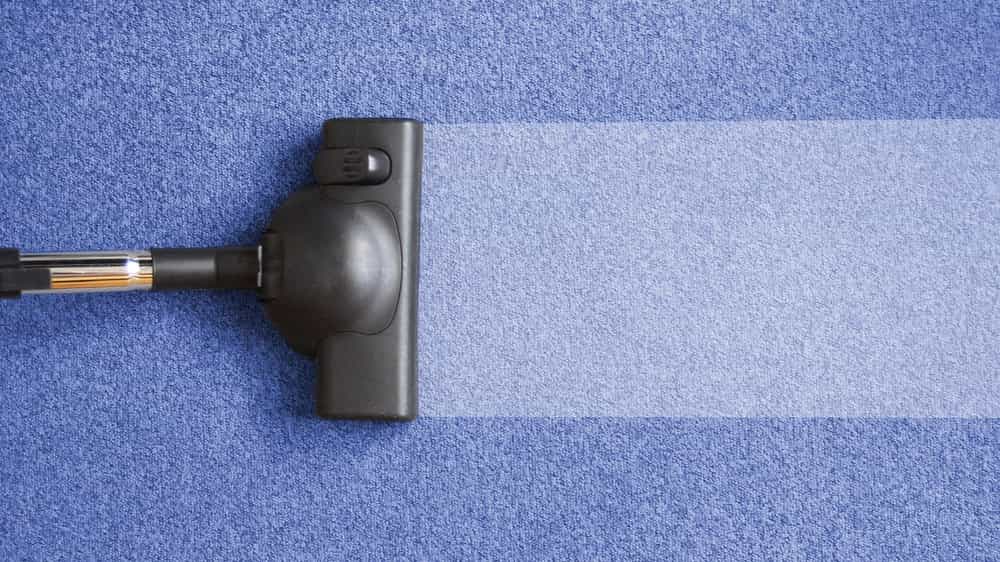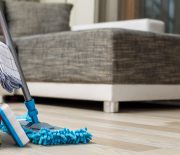Last update: 4 weeks ago

Maintaining your carpet clean is something that everyone should do. It’s the decoration of rooms that takes the most beating, and we always step on it. This is the reason why it’s also one of the things that collects the most dirt. If you don’t vacuum your carpet often and don’t take proper care of it, you’ll end up with a dirty, dust-filled carpet that will only make your room look and feel bad.
Whatever your reason for skipping carpet cleaning (being lazy is also totally legit), you can surely entrust the job to a professional. But here comes the difficult part – picking the right service. Yes, that’s right. You can’t just call your local cleaners and expect your carpets to be done and dry in an hour. Each service requires a specific execution time and provides different benefits depending on the used detergents, moisture, and the carpet’s textile. So if you want to get the most out of the service you book, you’ll need to know which carpet cleaning method is best.
Steam cleaning
Steam cleaning, also known as hot water extraction, is the most widely used – and arguably the best – method for cleaning carpets and upholstery. It delivers a high standard of hygiene without the need for harsh chemicals.
The process: The steam cleaning injects hot water under high pressure into the carpet fibres. The machine extracts the moisture simultaneously, thus leaving the carpet fairly dry and completely clean. This method is also known as hot water extraction and is broadly adapted for its excellent effect on carpet fibres. The external extraction process removed up to 95% of the moisture. The steam-cleaned carpet may take from 2 to 4 hours to dry completely, depending on the ventilation and temperature.
Cons: The moisture can cause a stale smell if not extracted well.
Dry cleaning
The dry carpet cleaning is conducted with the help of VLM machine systems. They use a minimum amount of moisture and encapsulate dirt through a series of different techniques.
The process: A slightly moist cleaning compound is spread over and rubbed into the carpet fibres. The molecules of the grime and the detergent bind together while the moisture evaporates. The compound should work on the carpet for a specified time, after which you can easily vacuum it out with the help of industrial power equipment.
The process of encapsulating surfactant molecules that attach themselves to the grime particles is called emulsification. It allows the carpet fibres to be easily vacuumed and rinsed away.
The compound is rubbed with a special cylindrical counter-rotating brush or a compression sprayer for heavy commercial carpet sanitation. Compared with hand-brushing, which only refreshes the carpet’s surface, machine scrubbing provides a deep carpet cleaning.
Cons: The dry cleaning compound is hard to clean and needs special commercial equipment. If left in the carpet fibres, it may cause allergies, discolouration and will accumulate more dirt over time.
Bonnet cleaning
The Bonnet cleaning method adapts hard floor spray buffing to carpets. Although it’s mistakenly called dry cleaning, it uses a fair amount of moisture during the cleaning and extraction process.
The process: The first step in the cleaning process is vacuuming the carpet area thoroughly. A commercial upright vacuum cleaner is used to provide deep cleaning of the carpet fibres. The brush unit opens the carpet pile and helps lift the dust particles. You can use a top vacuum cleaner on stairs and other awkward areas where the heavy commercial vacuum would be extremely hard to move around.
Any stains should be PH-tested and appropriately treated beforehand. Stains should be blotted instead of brushed, as the agitated treatment may trap them in the carpet fibres.
The cleaning solution is applied with the use of a large spray bottle. Alternatively, it can be sprayed onto the carpet by the bonnet machine. The solution may be a foaming shampoo, an encapsulating compound, a carbonated cleaner or any other detergent that’s industry-approved and tested. Adding a citrus extraction to the cleaning solutions will break down the grease molecules more easily.
After the cleaning solution has been applied, the floor is gently buffed and scrubbed with an oscillating brush. For better results, the cleaning pad may be sprayed or soaked in the cleaning solution.
Cons: The brushing and agitation on the fibers may damage the carpet if not conducted professionally.
Shampoo cleaning
The shampoo cleaning method relies on high foam levels to provide adequate cleaning.
The process: The foam should be thick and stable to ensure minimal moisture is used. Carpet shampoos contain optical brighteners that convert non-visible ultraviolet rays into visible light and give the carpet a fresh and neat look. The application is made with the help of a cylindrical or a rotary brush. The shampoo should be completely dry before being vacuumed with the soil.
Cons: If left in the carpet fibres, moisture can leave a stale odour and cause re-soiling soon after the cleaning is being conducted. As an addition, the rotary brush could easily damage the carpet and should not be used on cut pile carpets. Optical brighteners may build up over time and leave a yellow cast on the carpet that you can’t remove. If not cleaned well, the shampoo will attract more dirt that will be especially hard to remove.
Carbonated cleaning
This cleaning technique uses the power of carbonation to encapsulate and lift dirt off the carpet fibres.
The process: Carbonated cleaning is conducted with the help of a highly carbonated solution that is pressured into the fibres and simultaneously extracted from the carpet. Although this carpet cleaning method resembles most steam cleaning features, it is known as a completely separate technique. The carbonated cleaning works the same way club soda does when used for stain treatment. The highly carbonated bubbly solution drives dirt and bacteria out of the carpet’s fabric. It is applied and with a high power extraction machine.
Cons: While it’s an all-natural cleaning method, it may leave some bacteria in your carpets. The use of hot water and additional detergents can prevent that.
Vacuum wash
The vacuum wash method is a lighter version of steam cleaning used mainly for low traffic carpet areas.
The process: This cleaning machine injects water into the carpet and immediately vacuums it out. The vacuum wash allows water to penetrate about half an inch into the fabric. The quick water absorption reduces the drying time. This carpet cleaning method doesn’t require any cleaning products, so it won’t leave a detergent residue upon drying up.
Cons: The vacuum wash technique provides only surface cleaning for carpets and upholstery. It’s not a substitute for steam cleaning when it comes to heavily soiled carpets.
So which carpet cleaning method is the best?
Keeping your carpet looking good isn’t just about appearances—it’s about feeling comfortable in your own home. We walk on carpets every day, spill things, drag in dirt, and somehow expect it to stay pristine. Steam cleaning, or hot water extraction, is usually the go-to if you want a really deep clean. It’s especially lifesaving if you’ve got pets, kids, or a hallway that has seen more action than most.
If you’re just doing a quick refresh or have a delicate carpet that can’t handle a soaking, dry cleaning can do wonders without leaving your carpet soggy. Any of the mentioned methods has its own quirks and shine in different situations.
At the end of the day, the “best” method really comes down to your carpet, how messy it gets, and how fast you need it to dry. Pair the right cleaning method with regular vacuuming, and you’ll have a carpet that not only looks great but feels inviting.
In need of carpet cleaning?
Get your carpet and rugs professionally cleaned!








